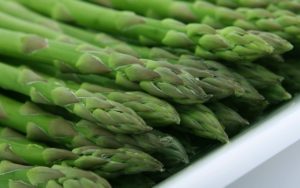The growing season may be over, but that doesn’t mean you’ll have to do without the fresh fruits and vegetables you’ve bought all summer at your farmers’ market. There are several ways you can save them and enjoy them throughout the winter.
Freezing is the easiest, quickest, and safest way to preserve vegetables, though it doesn’t work for all types. Asparagus, broccoli, green beans, peppers, summer squash, and dark leafy greens freeze well, and if you cut it off the cob, so does fresh corn. Use the freshest veggies possible and make sure they’re free of any damage and wash them. It’s best to blanche the vegetables before freezing, to preserve their quality by destroying the enzymes that destroy taste and color. To blanche, bring a large pot of water (at least a gallon for each pound of vegetables) to a boil, add the clean and trimmed veggies to the pot and check for doneness after a minute. When they are done, remove them from the pot and put them into an ice water bath to stop the cooking process. Let them cool and dry them well. Pack them into freezer bags — the heavy-duty kind are best — and force out as much air as you can. Pack them into the freezer but be careful not to crowd them.
When you’re ready to use them, you don’t even have to thaw the vegetables. Just drop them into your stir-fry, casserole or soup and cook as usual. A short time in the microwave will make them ready to eat. Be careful not to overcook or you’ll find those crisp veggies will end up soggy.
Another option is to can vegetables using the hot water bath method. This method of preserving foods dates to the 1800s, when Napoleon sponsored a contest to discover a means of preserving large amounts of food so that he could feed his troops while on the march. The winner was Nicolas Appert who heated food to a certain temperature, killing the germs that cause spoilage. The heat also forced air out of the jar so that it sealed the lid.
Canning works best with high acid vegetables, so it’s especially good for tomatoes; beans, beets, and carrots are also good for canning. You’ll need some equipment, including a kettle wide and deep enough to hold several canning jars and enough water to cover them; canning jars, and lids. It’s important that you closely follow all directions for water bath canning; check with Cornell Cooperative Extension for canning instructions and canning classes in your area.
Photo Credit: Meditations Via Pixabay
